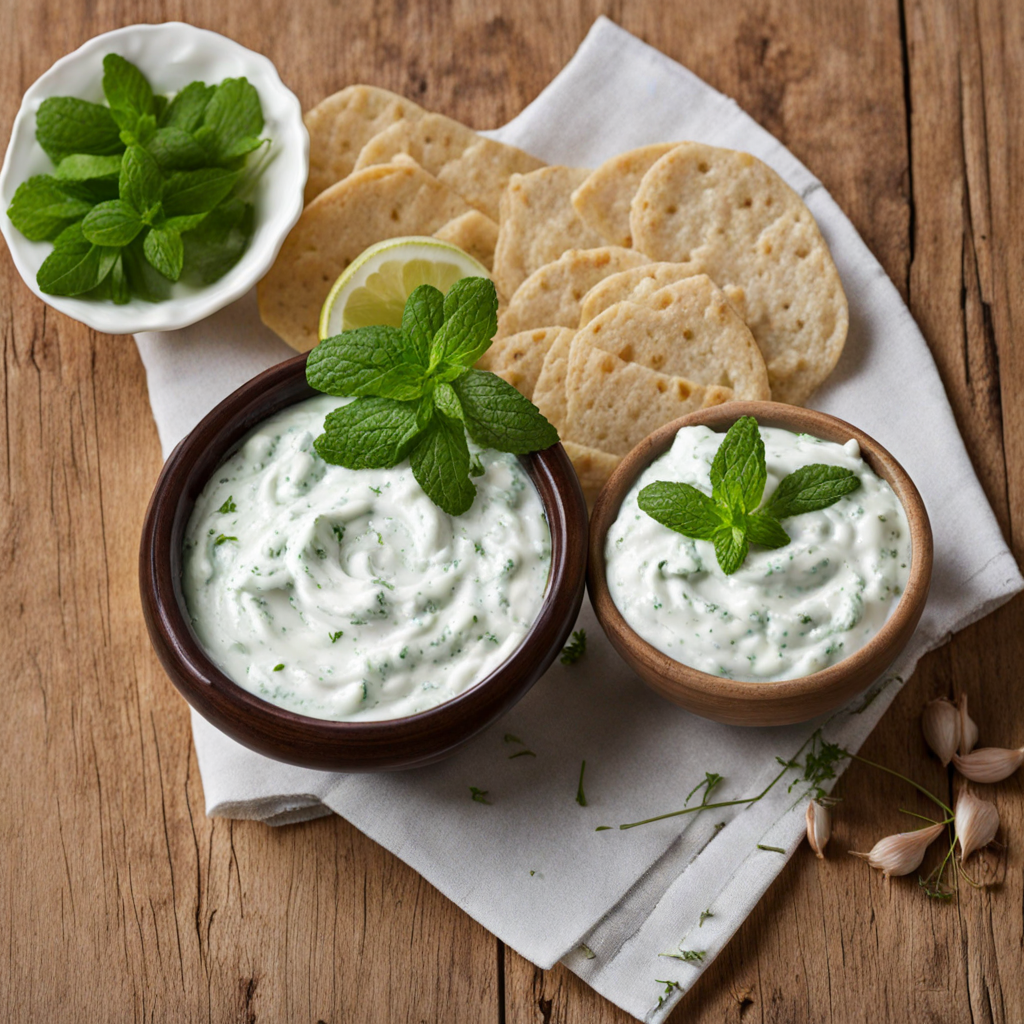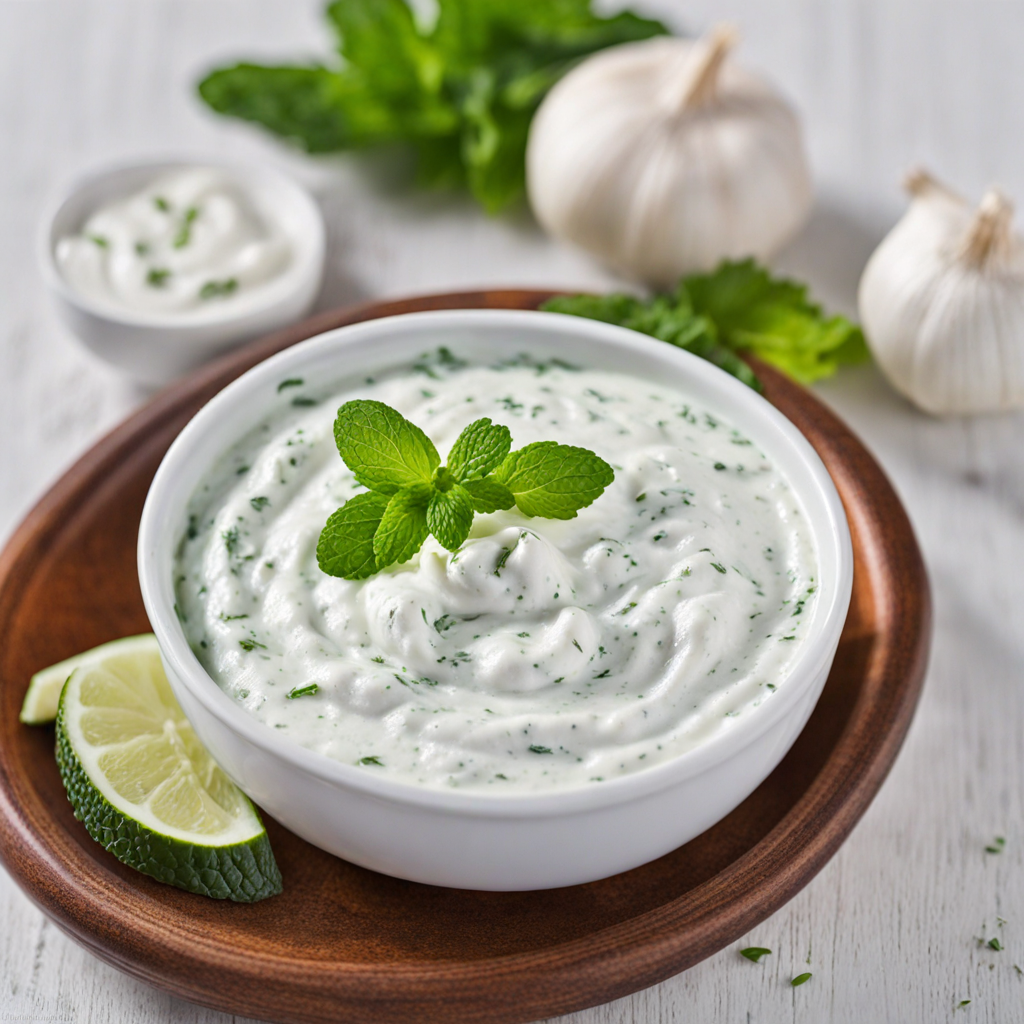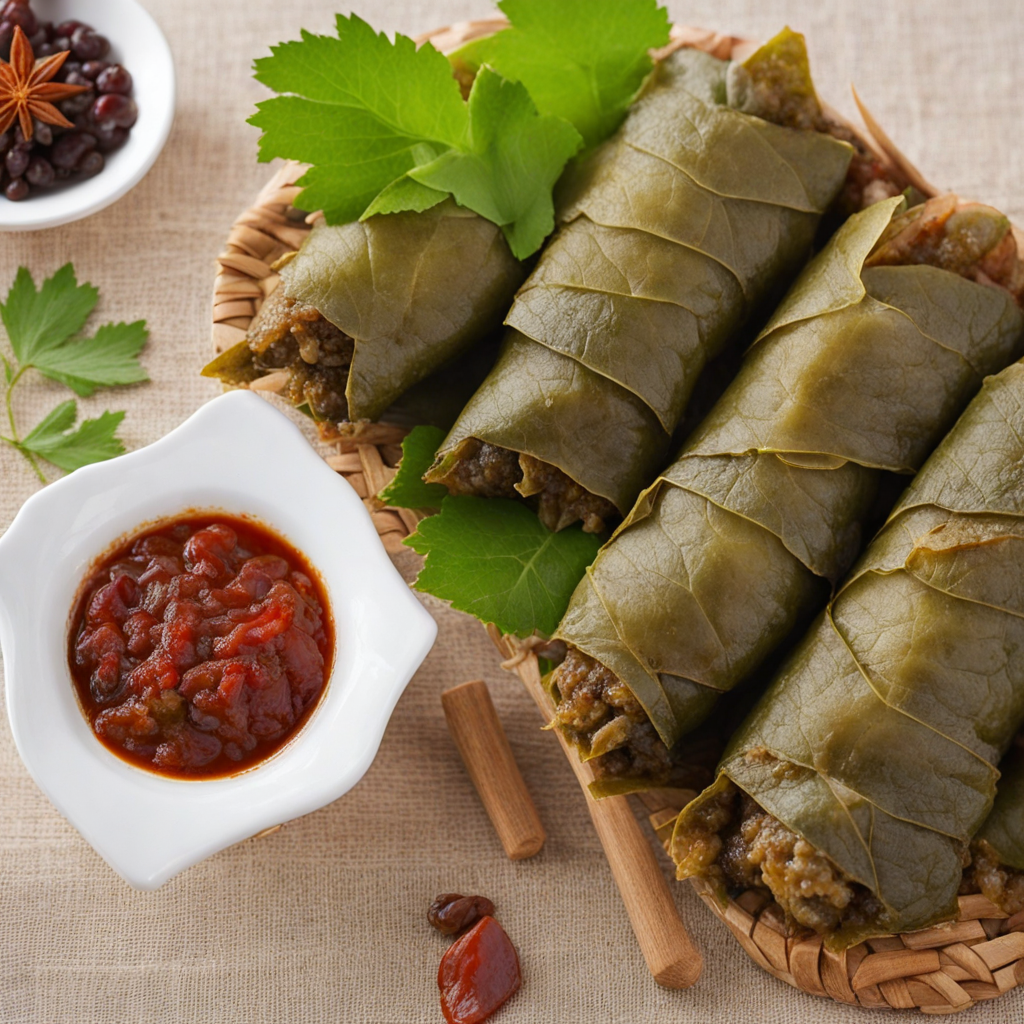Tzatziki
Tzatziki is a refreshing and creamy dip that hails from the Mediterranean region, with Cyprus being one of its beloved homes. This delightful dish is primarily made from strained yogurt, which lends a rich and velvety texture. Fresh cucumbers are grated or finely chopped and mixed into the yogurt, bringing a cool crunch that perfectly complements the creaminess. The addition of garlic, olive oil, and a hint of lemon juice elevates the flavor profile, making Tzatziki a zesty and aromatic accompaniment that tantalizes the taste buds. In Cyprus, Tzatziki is often enjoyed as a dip with warm pita bread or as a side dish to grilled meats, making it an essential component of traditional Cypriot meze platters. The vibrant green flecks of cucumber against the white yogurt create an enticing visual appeal, while the flavors meld together to create a harmonious balance of tanginess and freshness. Whether served at a festive gathering or as a casual snack, Tzatziki embodies the essence of communal dining and the Mediterranean lifestyle. This dish is not only delicious but also versatile, as it can be used as a marinade for meats or a topping for sandwiches and wraps. The cooling effect of Tzatziki makes it an ideal accompaniment to spicy dishes, providing a soothing contrast that enhances the overall meal experience. As you explore the tastes of Cyprus, Tzatziki stands out as a must-try, inviting you to indulge in its creamy, garlicky goodness and enjoy a slice of Mediterranean culinary tradition.
How It Became This Dish
The History of Τζατζίκι: A Culinary Journey from Cyprus Origins and Ingredients Τζατζίκι, a beloved dish that has transcended borders and cultures, is a refreshing yogurt-based sauce traditionally made with strained yogurt, cucumber, garlic, olive oil, and vinegar or lemon juice. Its origins can be traced back to the ancient Mediterranean, with influences from various cultures that inhabited the region, including the Greeks, Turks, and Persians. While the dish is often associated with Greek cuisine, its presence in Cyprus adds a distinct twist to its narrative. The word 'tzatziki' itself is thought to derive from the Turkish 'cacık,' which refers to a similar dish. However, the Cypriot version has its own unique attributes and preparations that reflect the island's rich history and diverse culinary influences. The primary ingredients of tzatziki—yogurt, cucumber, and garlic—are staples in many Mediterranean diets, highlighting the interconnectedness of these cultures over millennia. Cultural Significance in Cyprus In Cyprus, tzatziki is more than just a condiment; it is a cultural emblem. The dish is often served alongside traditional Cypriot meze, a communal dining experience characterized by a variety of small dishes that encourage sharing and conversation. Tzatziki's cool, creamy texture complements the often spiced and grilled meats found in meze platters, such as souvlaki and sheftalia, making it a staple at family gatherings, celebrations, and feasts. The preparation of tzatziki varies slightly from one household to another, reflecting the island's regional diversity. Some Cypriots prefer their tzatziki with a hint of mint for added freshness, while others may use dill. This adaptability speaks to the Cypriot spirit of hospitality, where each family recipe is cherished and passed down through generations, often evolving with each iteration. Historical Development The history of tzatziki in Cyprus is intertwined with the island's tumultuous past, marked by various occupations and migrations. The Greeks initially settled on the island around 3000 BC, bringing with them their culinary practices, which would later blend with those of the Byzantines, Crusaders, Ottoman Turks, and other cultures. During the Ottoman period (1571-1878), Turkish culinary influences permeated Cypriot cuisine, further shaping dishes like tzatziki. As Cyprus entered the 20th century, political changes and social dynamics led to a revival of interest in traditional foods. The island's independence in 1960 marked a new era for Cypriots, who began to embrace their culinary heritage with renewed pride. Tzatziki became emblematic of this resurgence, serving not only as a delicious accompaniment but also as a symbol of unity among the island's diverse communities. Today, tzatziki is a cornerstone of Cypriot identity, served in homes and restaurants alike. It is often accompanied by pita bread or used as a dip for fresh vegetables, showcasing its versatility and appeal across various dining contexts. The dish has also gained international recognition, appearing on menus around the world, thereby contributing to a broader understanding of Cypriot cuisine. Modern Interpretations and Global Influence As the world becomes increasingly interconnected, tzatziki has evolved beyond its traditional roots. Contemporary chefs have begun experimenting with the classic recipe, incorporating global flavors and ingredients to create new interpretations. Some versions may include avocado for creaminess, while others might add spices like cumin or coriander to give the dish an exotic twist. This evolution reflects a broader culinary trend where traditional recipes are reimagined to suit modern palates. In Cyprus, tzatziki remains firmly rooted in tradition. It is often made in households using locally sourced ingredients, such as sheep's or goat's milk yogurt, which lend a distinct tanginess to the dish. The use of fresh, seasonal cucumbers and garlic ensures that every batch of tzatziki is vibrant and full of flavor. Moreover, the dish's role in Cypriot culture continues to flourish. In recent years, there has been a growing interest in the island's culinary heritage, with food festivals celebrating local ingredients and traditional recipes. Tzatziki is often featured prominently in these events, highlighting its importance in both everyday life and festive occasions. Conclusion: A Symbol of Unity and Tradition Τζατζίκι embodies more than just a delicious combination of yogurt, cucumber, and garlic; it represents the rich tapestry of Cypriot history and culture. Its evolution from ancient Mediterranean roots to contemporary global kitchens showcases the adaptability and resilience of culinary traditions. As it continues to bring people together around the table, tzatziki is a testament to the power of food as a cultural connector, fostering a sense of community and shared heritage. In Cyprus, tzatziki remains a beloved staple, a dish that carries with it the stories of generations. Whether enjoyed in a bustling taverna or a quiet family gathering, it is a reminder of the island's diverse influences and the enduring nature of its culinary traditions. As the world embraces the flavors of Cyprus, tzatziki stands as a delicious ambassador of the island's rich gastronomic legacy, inviting all to experience its unique blend of history, culture, and flavor.
You may like
Discover local flavors from Cyprus







